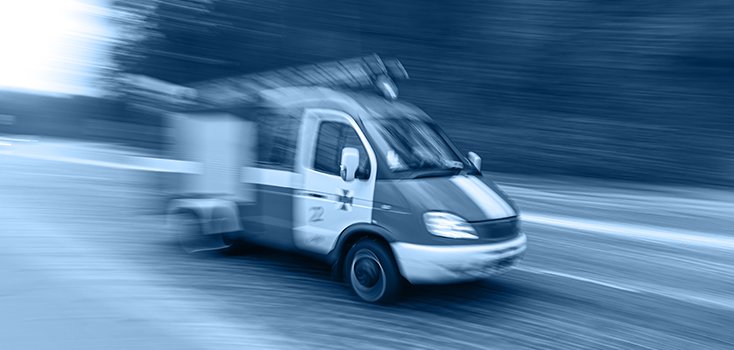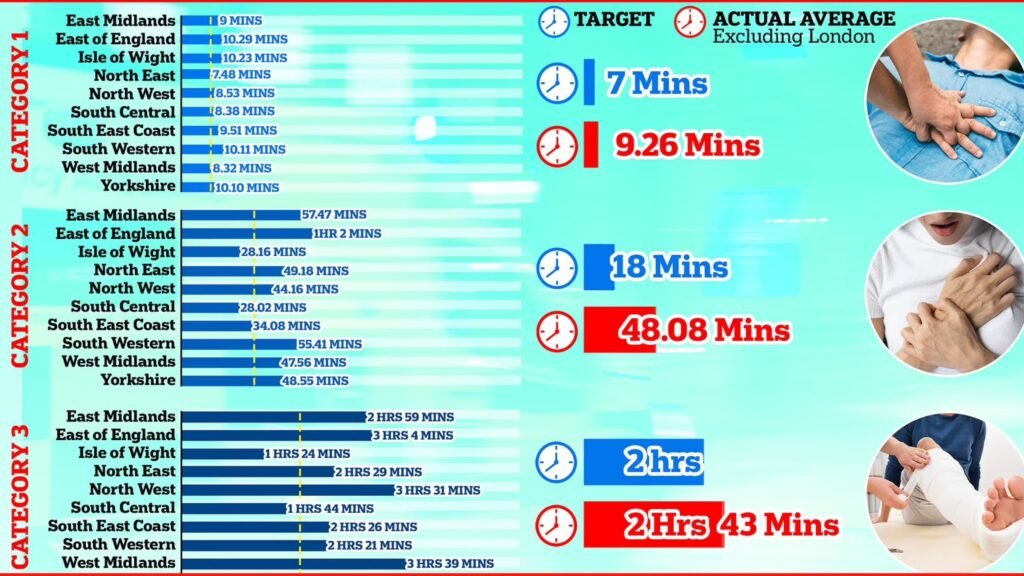Call anytime

27
Aug

Response time taken by ambulances is an important parameter in determining life and death. A quicker response would mean that treatment is provided by a certain time, fewer complications appear, and the survival rates are much higher among patients.
What is the definition of Ambulance Response Time, and how does it matter?
Response time of the ambulance is the Time taken between the ambulance call or receiving the call and the arrival of the ambulance to the patient. This is a critical time given that the situation of medical emergencies like cardiac arrest, strokes, accidents, or trauma must be attended to at a critical time.
Reduced response time implies that medical professionals have a greater chance to stabilize the patients before it is too late, and they can suffer irreversible consequences.
Each minute without CPR or defibrillation during cardiac arrest cuts survival by 7–10%, making faster ambulance response times critical worldwide.”
Other elements that influence the Time of response are traffic, geographical location, availability of ambulances, and the incorporation of technology.
Emergency care has been made more efficient through online booking systems and GPS tracking features, which have played a significant role in getting rid of delays.
For more details Click Here
Why is the response time of the ambulance important to the survival of patients?
The relationship between the response time of the ambulance and the survival rate is indeed hard to dismiss. When an individual suffers a major setback such as a heart attack or stroke, emergency treatment will spell the difference between life and death. Fast arrival guarantees the delivery of oxygen, releasing medication, and the quick transfer to the hospital.
As studies indicate, survival after severe trauma or cardiac arrest can significantly decrease even with a five-minute delay. This is why emergency services pursue a so-called golden hour rule- the first hour after a significant medical incident, where chances of success are the highest.
There is also the added benefit of staving off long-term complications that arise as a consequence of long response times. A case in point, in stroke victims, early treatment can help limit the damage to their brains, enhancing treatment outcomes. Thus, reducing disability, minimizing disability, and improving quality of life is not only about saving lives improving ambulance response time.
For more details Click Here
How do the factors affect ambulance response time in cases of emergency?
There are a number of factors that influence ambulance response time in times of emergencies. Congestion in the streets is one of the biggest problems in cities, leading to long delays in traffic. Location can also be a big factor since waiting Time tends to be prolonged in remote and rural areas due to the scarce resources there.
Ambulance availability is also a decisive factor. When all the units are occupied, the dispatcher must spend additional Time in order to find the nearest available ambulance. Weather conditions, such as heavy rain or snow may even slow response.
It is important to point out that technology is vital in breaking these barriers. Electronic GPS, auto-dispatch systems, and web-based ambulance booking systems have also helped decrease response time by calculating the least time-consuming paths and dispatching the nearest available ambulances.
Even though not all causes, such as traffic, can be addressed, the use of smart systems and expansion of the ambulance networks would highly enhance the response time of the ambulances and save more lives in times of emergency.
For more details Click Here
How can the faster response/arrival time of ambulances increase survival rates?
The direct correlation to faster ambulance response and survival is the delivery of immediate care to the patient, providing a better chance at survival. In cardiac arrest, the damage to the brain begins between 4 and 6 minutes of oxygen absence. One second is the difference.
In case an ambulance arrives rather quickly, paramedics have enough Time to start CPR, provide oxygen, and medications that may save a person before they arrive at the hospital. This timely support can help avoid organ failure and damage them permanently.
In case of trauma patients, a fast response will be useful to manage the hemorrhage, shock, and maintain the vital signs. In the same manner, stroke patients respond better to early intervention so as to activate blood circulation and minimize the neurological effects of the stroke.
Research indicates that lowering ambulance response time in a case beginning with say 10 minutes, to less than 8 minutes, can increase the survival rate of life-threatening emergencies significantly. That is why the delivery of emergency medical services involves speed on the same level as the quality of care.
For more details Click Here
What are the options employed to decrease the response to ambulances?
To become faster in ambulance response time, technological solutions, planning, and infrastructure have to be implemented. Most cities have now turned to dispatch through GPS that automatically sends the nearest available ambulance to a call. This minimizes the delay that is brought about by manual processing.
Emergency service providers also use real-time traffic data to use alternate routes to get to their destinations by bypassing congestion. To avoid long queues of patients in severely trafficked regions, motorbike ambulances are also implemented as a source of immediate first aid.
One major measure is to situate the ambulances in strategic locations that offer the greatest demand instead of locating them in one station point. Such a decentralised system makes the emergency more accessible.
Also, spreading awareness promotes a better provision of location details and medical conditions by people calling to the rescue. Online ambulance booking also has digital platforms that lead to improved tracking and speedier release. All these are put in place to reduce the ambulance response time and save lives at a minimal cost.
For more details Click Here
Is it possible to use technology to enhance ambulance response time?
Technology plays a significant part in shortening the response time of ambulances as well as the emergency treatment. New emergency systems can track their position with the assistance of the GPS navigation system, optimize their route based on AI and real-time traffic data, which allows reaching the patient in the shortest amount of Time.
Mobile applications enable patients or their relatives to make bookings of ambulances in real-time, communicate exact locations, and the location of the traveling ambulance. This removes any confusion as well as simplifies the process as opposed to conventional phone-based requests.
Moreover, there is a steady increase in the number of ambulances fitted with telemedicine devices so that the doctor can advise paramedics on the way through telemedicine. This eliminates delays in remedy even before arriving at the hospital.
The fact that integration occurs with hospital systems also means that the emergency department will be prepared when the patient comes, minimizing delays in treatment. The above shows that technology is a game-changer when it comes to reducing the response time of the ambulances and enhancement of survival rates in all emergencies that involve the medical aspect.
For more details Click Here
FAQs
How many minutes is of average ambulance response?
The target goes down to below 8 to 10 minutes in most urban areas, depending on the region.
What is the significance of ambulance response time?
This is because they will arrive early to be treated, hence they will increase the chances of getting survival shots in emergencies.
Is it possible to follow an ambulance in real-time?
A lot of services provide GPS-based tracking that allows better transparency and faster transport.
Does internet reservation shorten the response time?
Online booking systems enable you to get the closest ambulance in the shortest Time possible.
What is the golden hour in acute conditions?
It is the initial 60 minutes following a major medical or accidental occurrence, when treatment yields the best results.
Conclusion
Response time is a key factor that dictates life or death in the case of an emergency that involves the use of an ambulance. The quicker the response, the more there is an opportunity to save lives, minimize complications, and facilitate recovery.
With the use of technology and effective planning, there is the ability to reduce response time. Milliseconds matter, and it can mean a difference when it comes to rush Time of an ambulance.
For more details Click Here

Leave A Comment